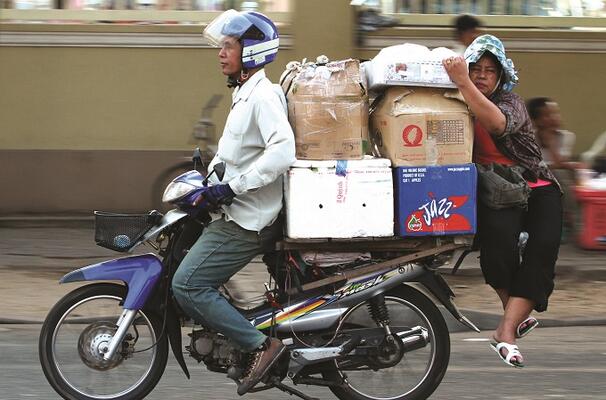
Trade, connectivity and inclusiveness for sustainable development (en)
inequalities within societies
The biennial Aid for Trade Global Reviews provide an opportunity for the trade and development community to come together to evaluate the support provided to developing and least developed countries (LDCs) to help them to integrate into the multilateral trading system. At this year’s Global Review, ministers, heads of international organizations and stakeholders from around the world will participate in no fewer than 54 sessions of at the World Trade Organization (WTO) on 11-13 July.
The WTO’s Aid for Trade initiative has helped developing countries and LDCs better integrate trade priorities into their national and regional development policies since 2006. In so doing, greater policy focus has been brought to trade issues and more resources have been allocated by development partners to address traderelated infrastructure and supply-side constraints.
More than US$300 billion of aid-fortrade support has been disbursed since the initiative was launched just over a decade ago, backing a range of essential projects. Some 146 developing countries have received support, mainly in Asia (41.5%)and Africa (38.7%), with 27% of the total going to LDCs. Disbursements to LDCs reached a record US$10.5 billion in 2015.
Successive Global Reviews since 2007 have shed light on the steps being taken by developing country governments, and their development partners, to leverage trade for development. The Reviews have also sought to contribute analysis on specific issues. The theme of this year’s Review is ‘Promoting trade, connectivity and inclusiveness for sustainable development’. I am pleased that the role of Aid for Trade in advancing the United Nations Sustainable Development Goals, notably as regards women’s economic empowerment, will be prominent in the discussions.
AID IMPACTThe impact of Aid for Trade is demonstrated by a growing body of research. Some 500 case stories have been collected in the past six years, illustrating the practical difference this initiative can make. This year’s cases, focused on trade facilitation, are particularly powerful. For example, at the Busia One- Stop Border Post between Uganda and Kenya, streamlining of customs and border controls has reduced the average time to cross by 80% and cut customs processing time by 84% in the past five years.
This is welcome news, particularly in the context of the entry into force of the WTO’s Trade Facilitation Agreement (TFA) on 22 February this year. WTO research suggests that African countries and LDCs can expect the biggest reduction in trade costs (in excess of 16%) from TFA implementation.
Trade facilitation is an Aid for Trade programming priority due to demand from both developing countries and their development partners. This work encompasses not only the TFA itself but also the related infrastructure needed to get trade flowing. Of course, this physical infrastructure is ever-more intertwined with digital connectivity. Fiber-optic cables are often laid at the same time that roads are built. Submarine cables have reached even the most geographically remote WTO members in the past five years.
DIGITAL DIVIDEDespite this progress, the International Telecommunication Union (ITU) estimates that 3.9 billion people, more than half the world’s population, remain offline. The digital divide is also a market-access divide, as people who are offline are excluded from the global market the internet represents. The divide is seen both between and within countries: between rural and urban populations, women and men, and small and large firms. Failure to address it risks reinforcing existing inequalities within societies.
A key objective of the United Nations 2030 Agenda for Sustainable Development is to ‘significantly increase access to information and communications technology and strive to provide universal and affordable access to the internet in LDCs by 2020’. This is important not just in enabling people to access the web, but also in helping them to benefit from trade. The trade impact from poor connectivity is clear. A recent WTO Trade Policy Review highlighted the case of an LDC that had installed an electronic customs cargoclearance system. While this innovation promised big gains in efficiency, the customs officials regularly have to revert to a paperbased system due to regular power outages, which interrupt internet access.
Of course, while connectivity is essential, it takes more than just a digital connection to enable micro, small and medium-sized enterprises (MSMEs) to make the most of global markets. A range of other factors must be in place: training and skills development, payment systems, trade logistics, legal frameworks and access to finance. The list goes on. However, we know that when the right conditions are in place, then e-commerce can be truly transformational for MSMEs – and a major driving force for development.
This is where Aid for Trade comes in. Work to bridge the physical and digital divides is essential. The Global Review is an opportunity to highlight progress made to date, lessons learned and the challenges still remaining. It also works to help us better understand the role that digital connectivity in particular can play for development in the context of a fastchanging global economy.
The Aid for Trade initiative has made a significant difference over its relatively short history. The Global Review is our opportunity to make sure that it keeps delivering in the years ahead. I hope you will be able to join us for this landmark event in the trade and development calendar.



